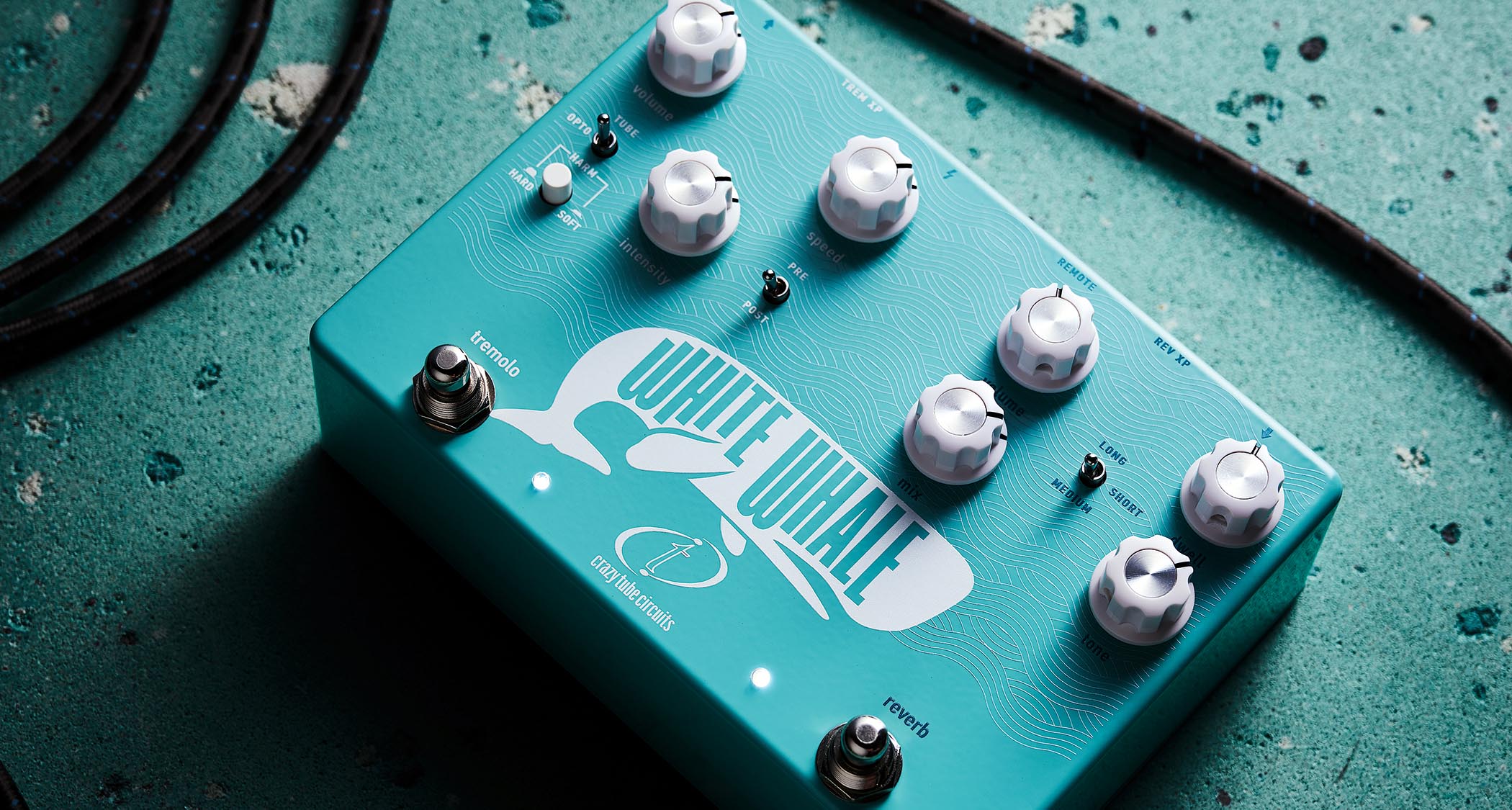
In the historical timeline of guitar effects, long before pedals of any kind were commonplace, the effects that guitarists utilised were mainly built into their amplifiers, namely tremolo and reverb.
Fender is the company most of us associate with those onboard effects. Tremolo – a cyclical change in amplitude manifesting as a rhythmic pulsing – debuted in a Fender amp, the Tremolux, in 1955, albeit wrongly labelled as ‘vibrato’, which is actually pitch modulation. Fender introduced spring reverb later on with the standalone 6G15 unit in 1961, and had it built into amps from 1963’s Vibroverb onwards.
The combination of tremolo and spring reverb is a sweet one, but not all amplifiers are vintage Fenders, so plenty of manufacturers have strived to give us pedals that aim to recreate that sound.
While there are some convincing digital emulations of spring reverb available out there, some players will always want the real thing. One company that has tried to satiate that need is Athens-based Crazy Tube Circuits, who released its original White Whale pedal, featuring real spring reverb and tremolo, several years ago.
Now we welcome this new V2 iteration of the pedal into the fold, which expands the original feature set and has an upgraded power amp to drive the spring tank for more headroom and a wider frequency response.
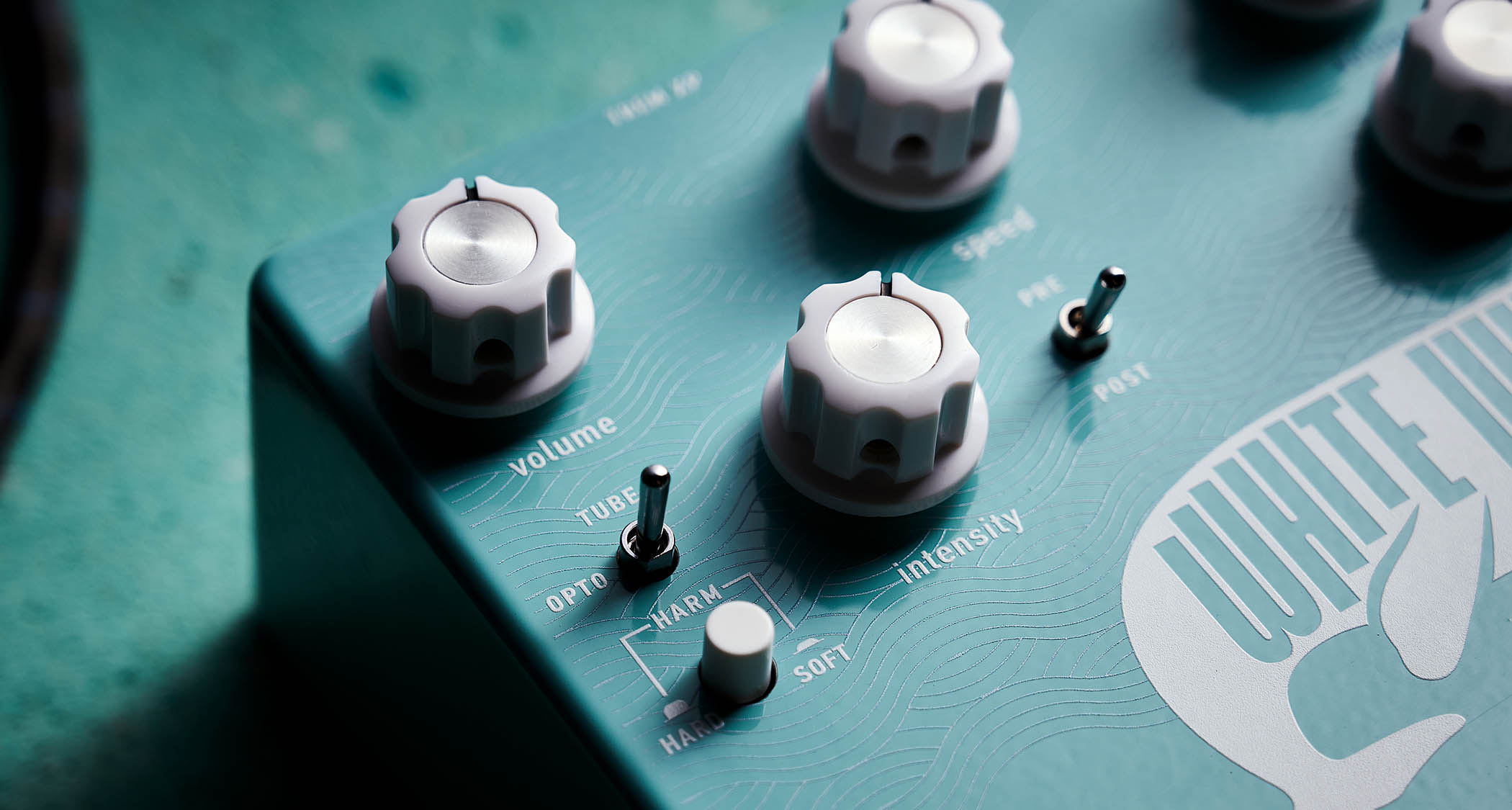
The tremolo and reverb in the pedal are independently footswitched so can be used individually or in combination. A Pre/Post switch determines whether the tremolo comes before or after the reverb – and the two outcomes can be quite different.
Some may favour having reverb last to smooth out the sound, while others would prefer the order that was found in vintage Fender amps where the tremolo came last, yielding a more intense tremolo, exerting undulation in the reverb trail.
In Use
The reverb is based around a spring tank assembly with three springs that is attached to the pedal’s bottom plate.
Although the same assembly is used at all times, a toggle switch can select Short, Medium and Long reverbs, the difference in reverb size and decay coming from carefully tuned all-analogue tone-shaping before the reverb driver – the power amp that drives the spring tank.
A Mix knob governs how much reverb is added to the dry signal, and there’s a Tone knob to adjust the brightness of the reverb.
Besides these, you’ll find crucial adjustment via the Dwell knob, which controls the strength of the signal going into the reverb driver. This not only sets the length of the reverb decay but has an effect on its tonal quality because it’s tuned to emulate the valve and output transformer saturation that was produced on higher dwell settings of original ’60s gear.
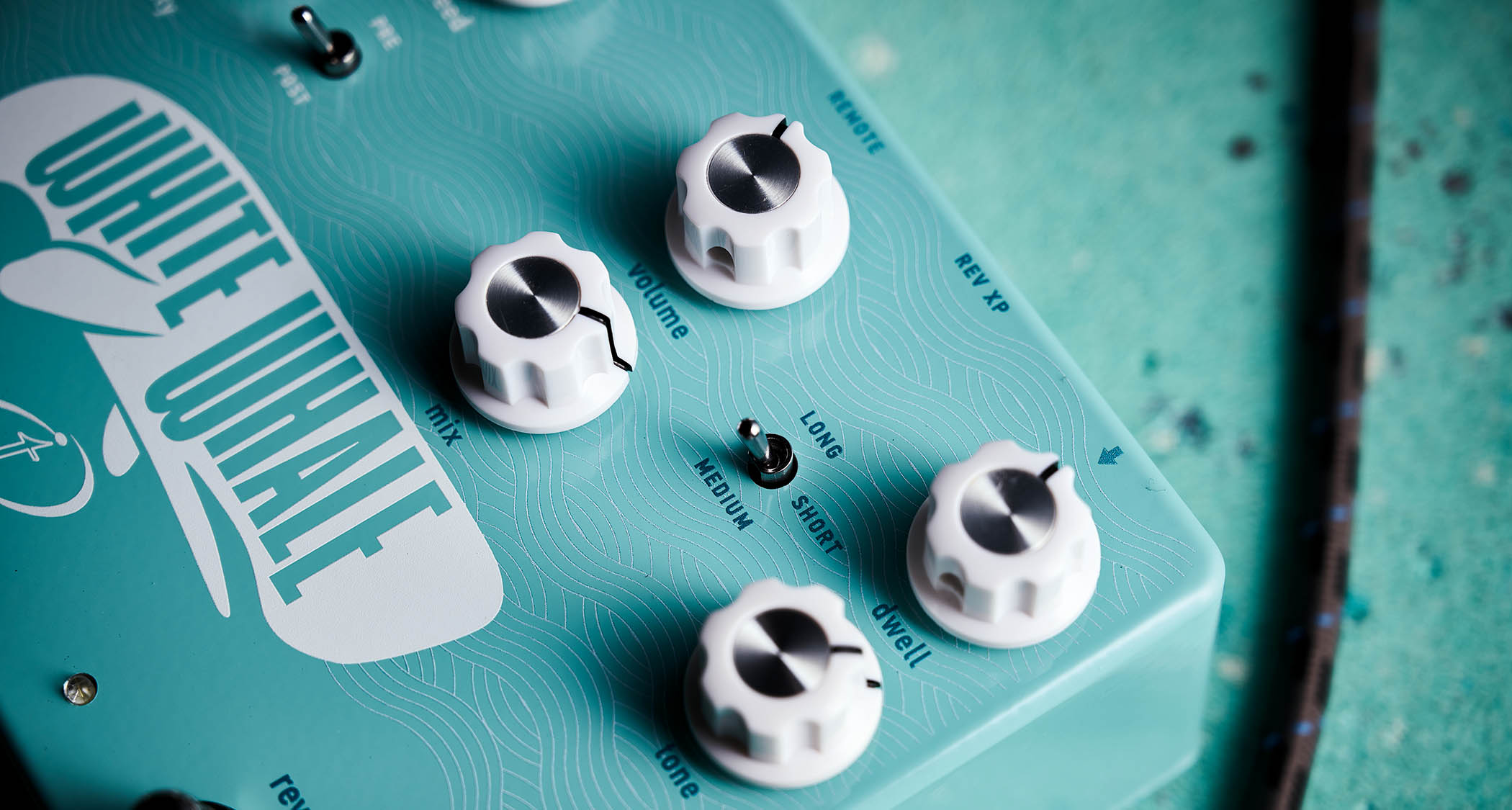
Turning up the Dwell control emphasises the ‘drip’ that’s sought after by surf guitarists – the reverb tail on a short percussive note that’s almost like an echo effect. If you enjoy playing Dick Dale’s Misirlou, then this will enhance your experience, especially on the Long setting with its denser sound of a long three-spring tank.
Short and Medium settings are based on the sound of a two-spring tank for some amp-style reverb action and, overall, there’s plenty of variety here, whether you’re looking for low-key ambience or brash and splashy. It’s real spring reverb and it sounds excellent.
The overall output of the reverb effect is governed by a Volume knob that has a unity gain setting at around 11 o’clock. Beyond that point you get a boost and there’s 20dB on tap. The tremolo section also has a Volume knob that has similar boosting powers, so there’s plenty of opportunity to bring drive into the equation should you wish.
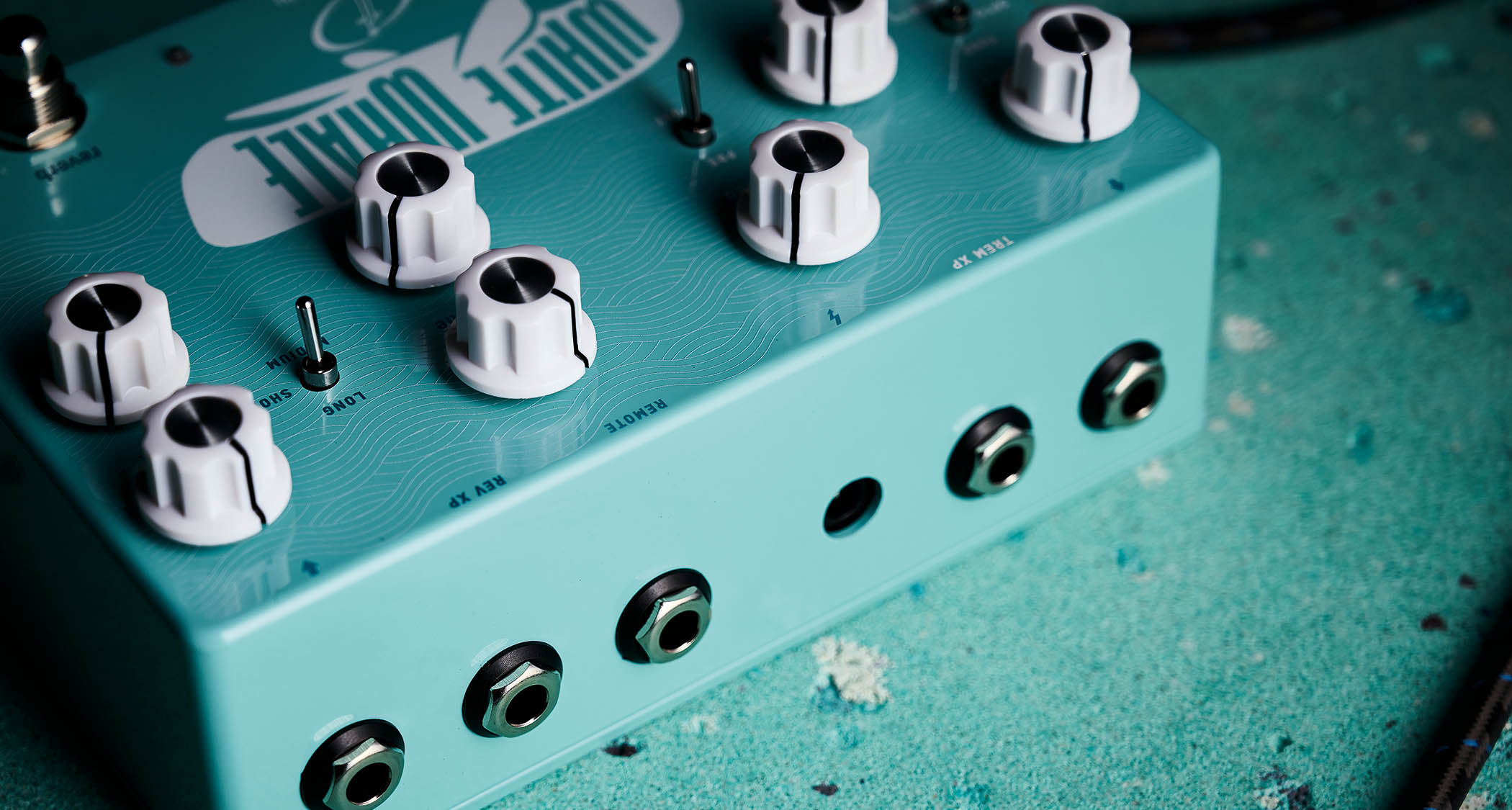
The standard Speed and Intensity (tremolo depth) knobs adjust the sound of the tremolo, but the first port of call has to be selecting which type of tremolo you wish to employ.
The choice is of three tremolo types that were used at various times in Fender amps: there’s Bias tremolo as used in early Fender amps where the circuitry varied the bias of valves; Opto is based on the photocell circuitry seen in black-panel amps from around 1963 onwards; and the third choice is Harmonic, a rarer type of Fender tremolo as briefly seen in some of the company’s brown Tolex amps from the early ’60s and created using dual-band filtering.
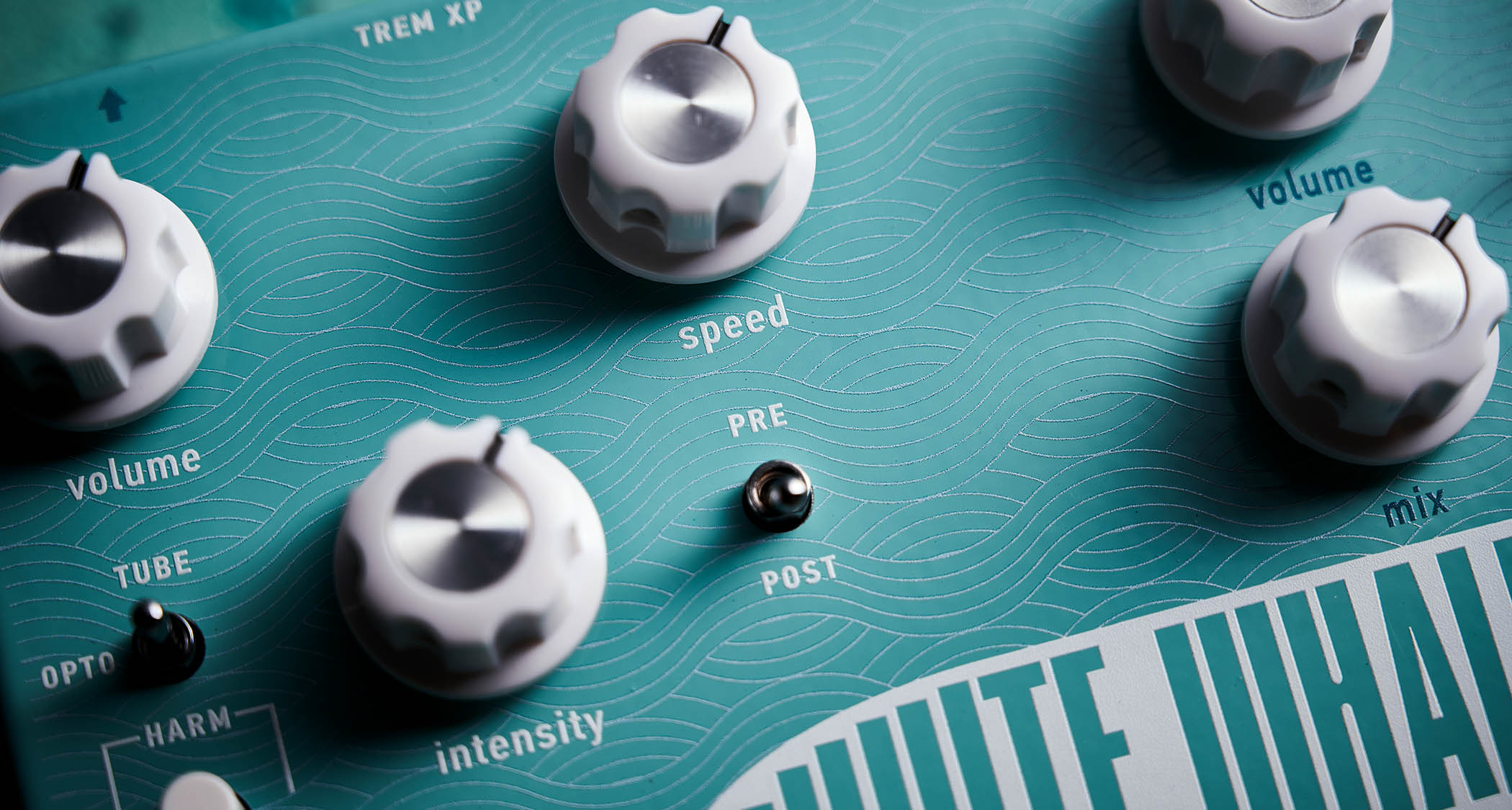
Two options are available for the Harmonic type’s more sonically complex of tremolos. Hard offers a wider range of pulsating frequencies and a more pronounced sweep from low to high for a harder edge, but we gravitated more towards the smoother, more diffuse sound that Soft delivers.
All of the tremolo types sound great and have a practical speed/depth range, neatly covering all the options if classic, vintage and traditional are your watchwords.
Both Tremolo and Reverb sections can have their own expression pedal control. An expression pedal plugged into the Trem XP input will control the speed of the tremolo.
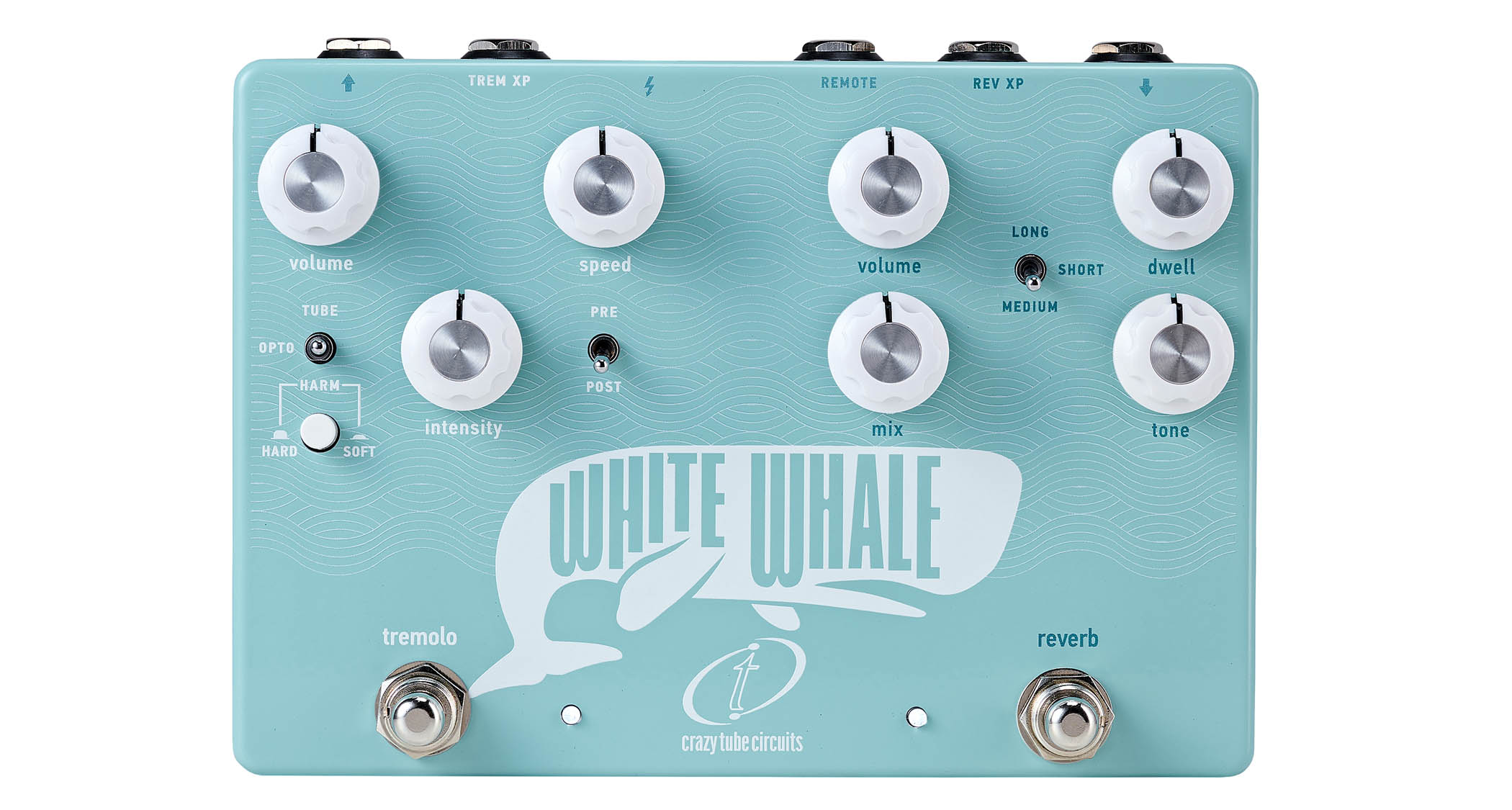
Alternatively, you could plug in a footswitch to set the speed by tap tempo (internal switches in the pedal let you select which method). The reverb’s Mix is the parameter that can be put under expression pedal control.
There’s also provision to plug in a remote switcher via a TRS cable to activate or bypass reverb and tremolo sections independently (Crazy Tube Circuits has its own dual footswitch, also in the White Whale V2 colours, for £45).
As with any spring reverb, there is the possibility of an audible crash if the pedal is subjected to a knock, so using remote switching enables users to not only avoid stepping directly on the pedal but also to be able to place it in an isolated position away from any stage vibrations that could cause the springs to move.
Specs
- PRICE: $359/£299
- ORIGIN: Greece
- TYPE: Spring reverb & tremolo
- FEATURES: True bypass
- CONTROLS: Tremolo Volume, Tremolo Speed, Tremolo Intensity, Tremolo mode switch (Tube/Opto/Harmonic), Harmonic Hard/Soft switch, Pre/Post switch, Reverb Volume, Reverb Dwell, Reverb Mix, Reverb Tone, Reverb size switch (Long/Short/Medium), internal XP mode switch, Tremolo footswitch, Reverb footswitch
- CONNECTIONS: Standard input, standard output, standard TRS Trem XP, standard TRS Reverb XP, standard TRS Remote
- POWER: 9V DC adaptor (not supplied) 180 mA
- DIMENSIONS: 172 (w) x 125 (d) x 70mm (h)
- CONTACT: Crazy Tube Circuits







